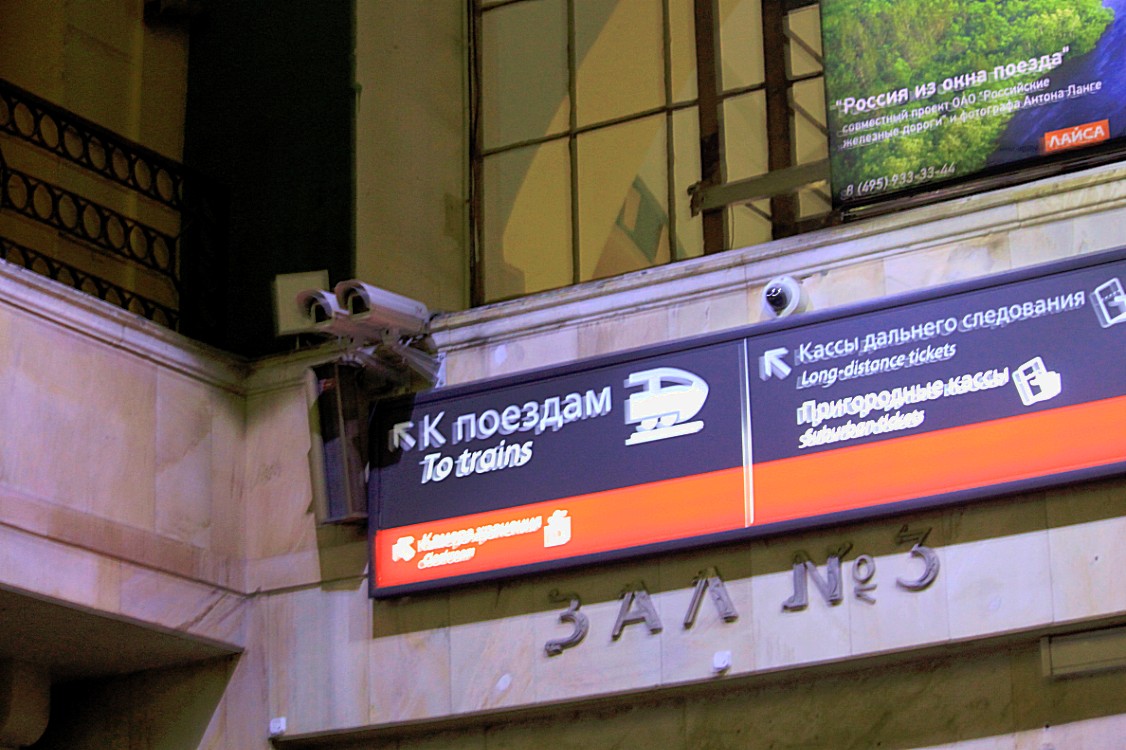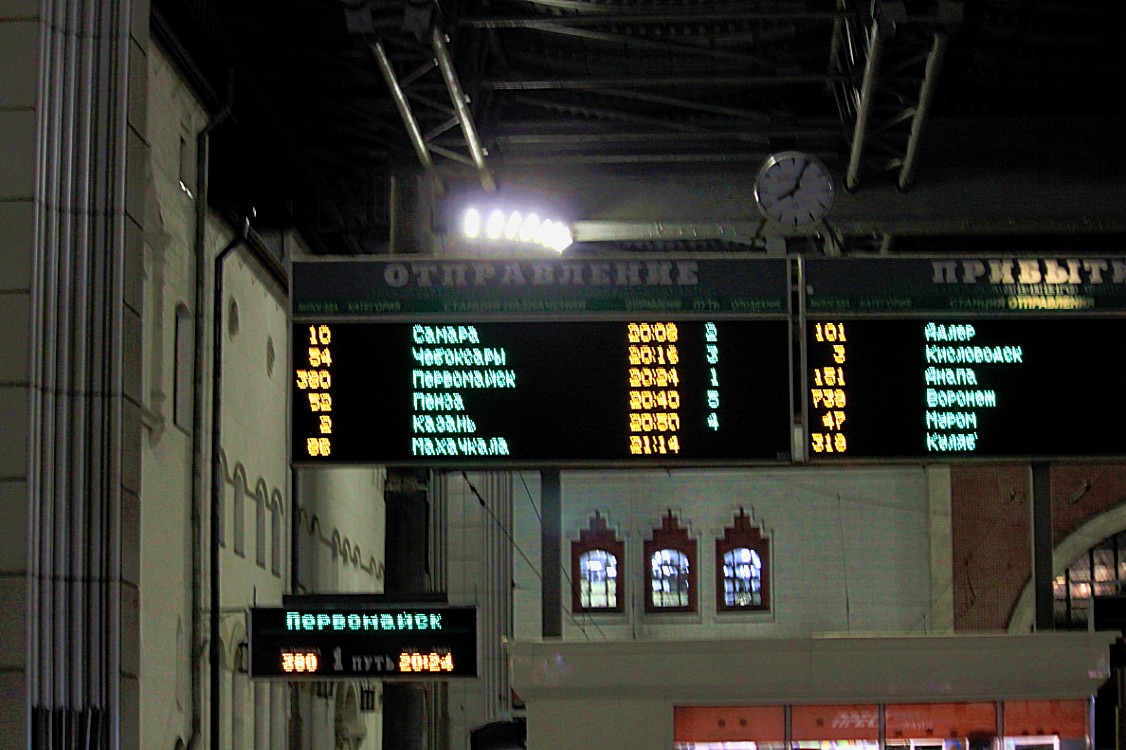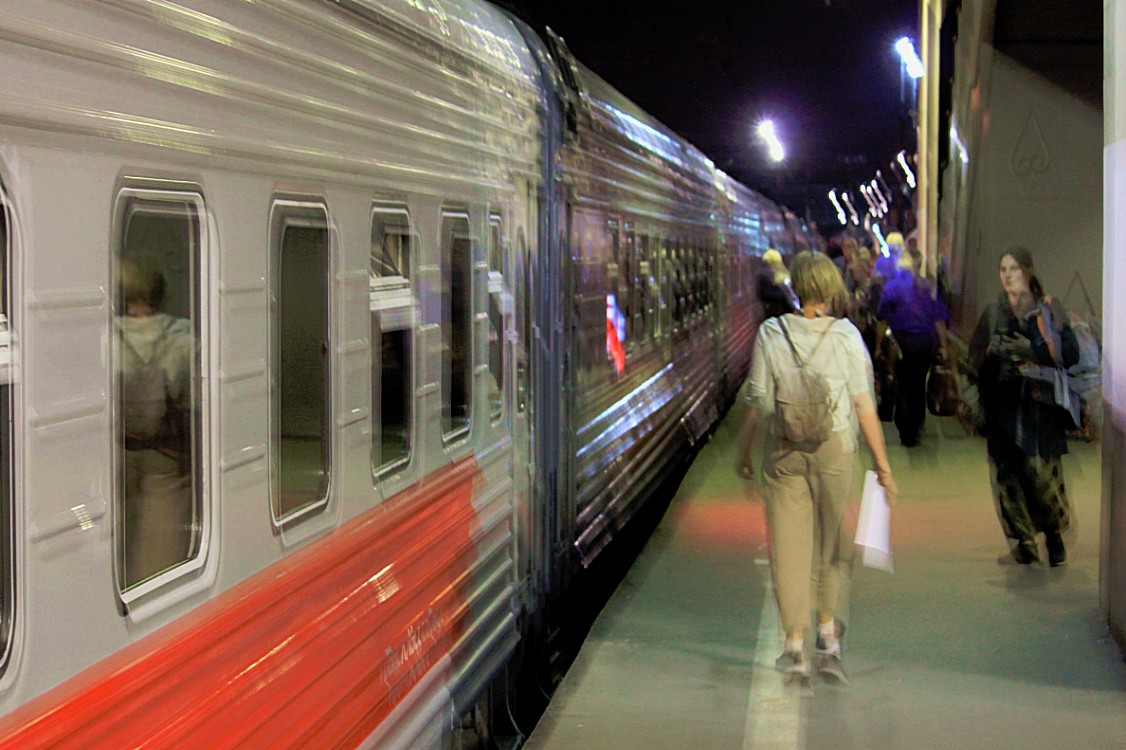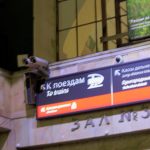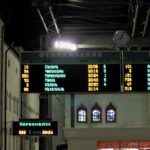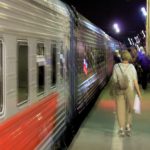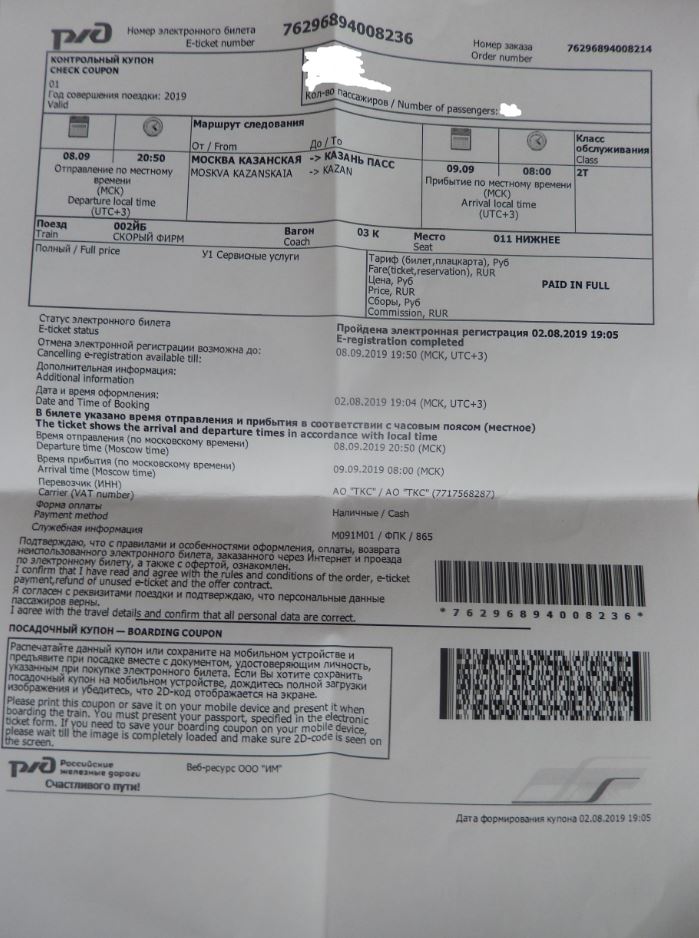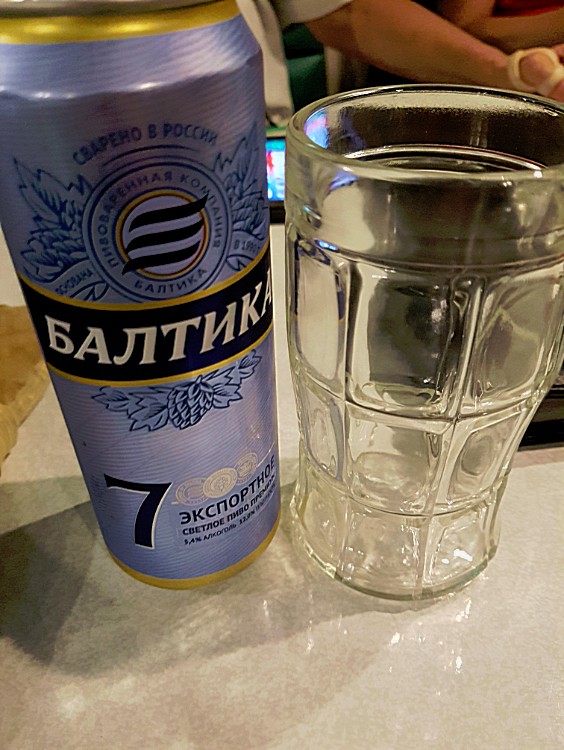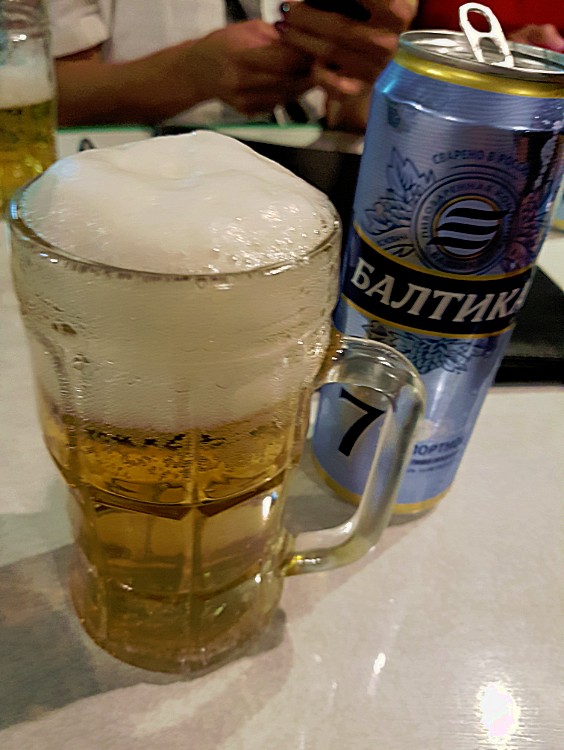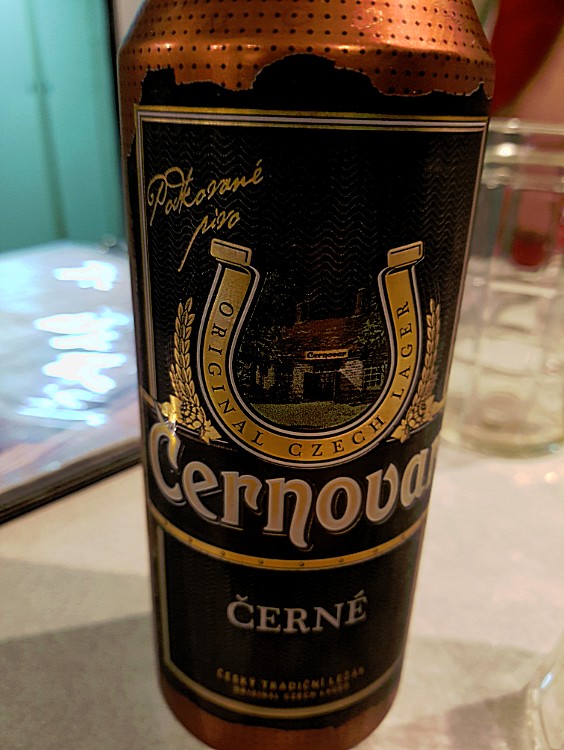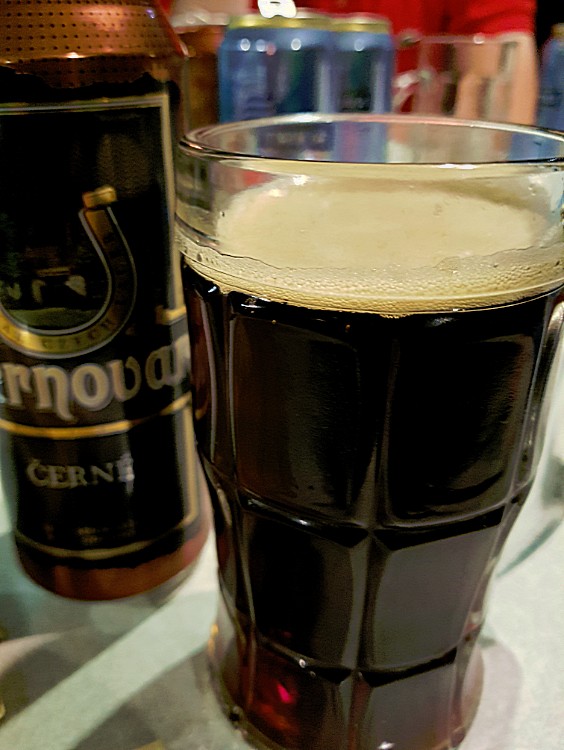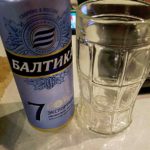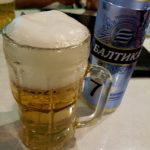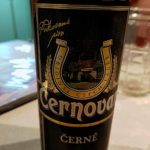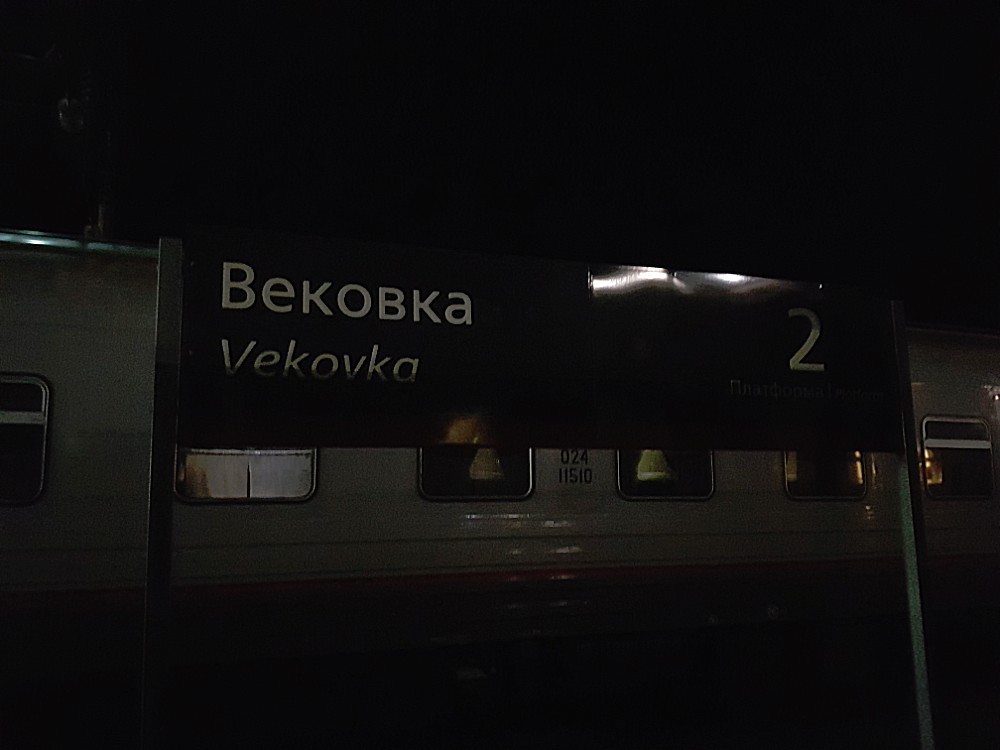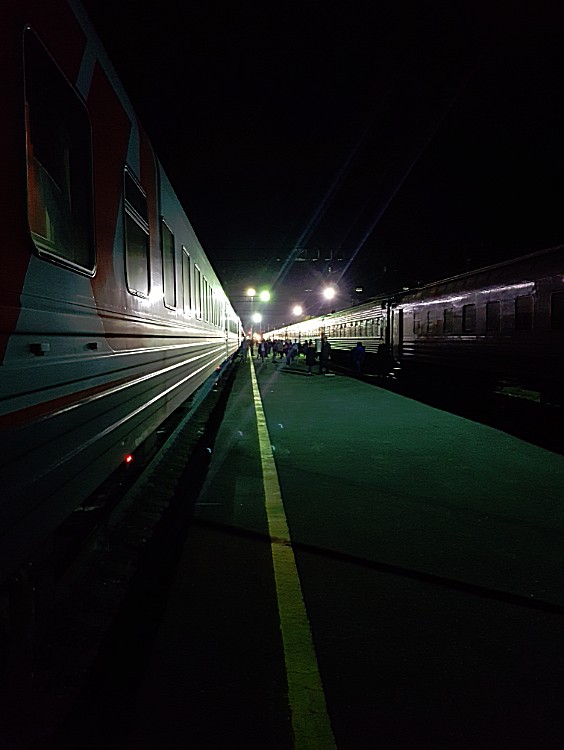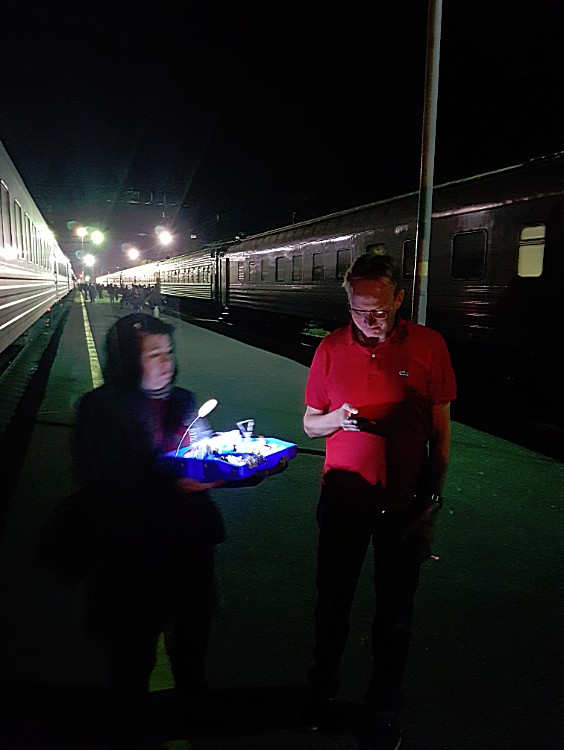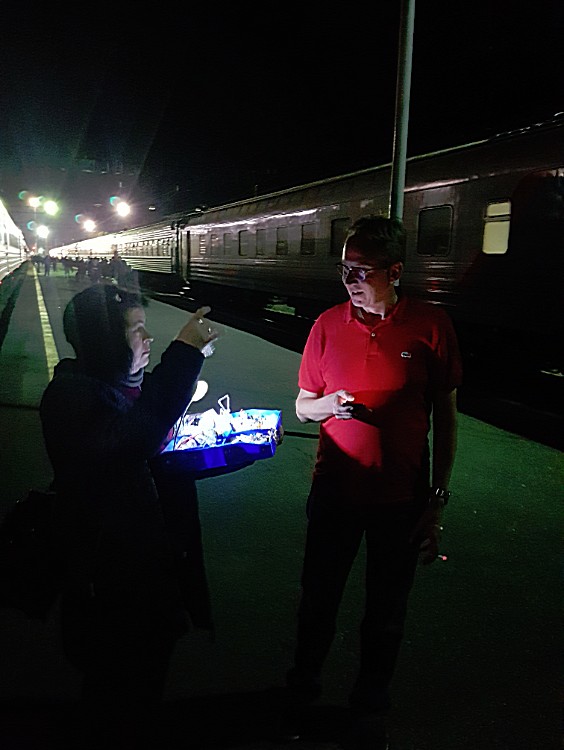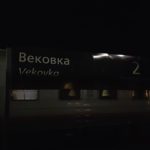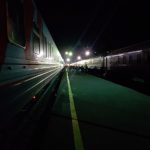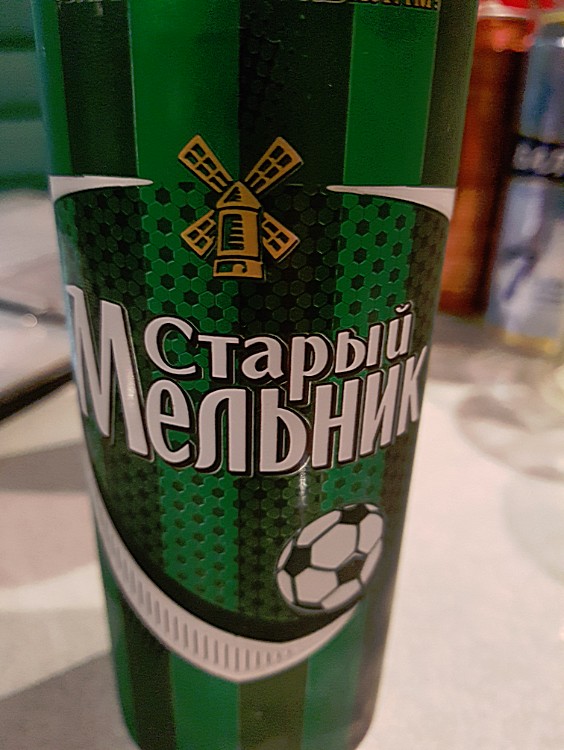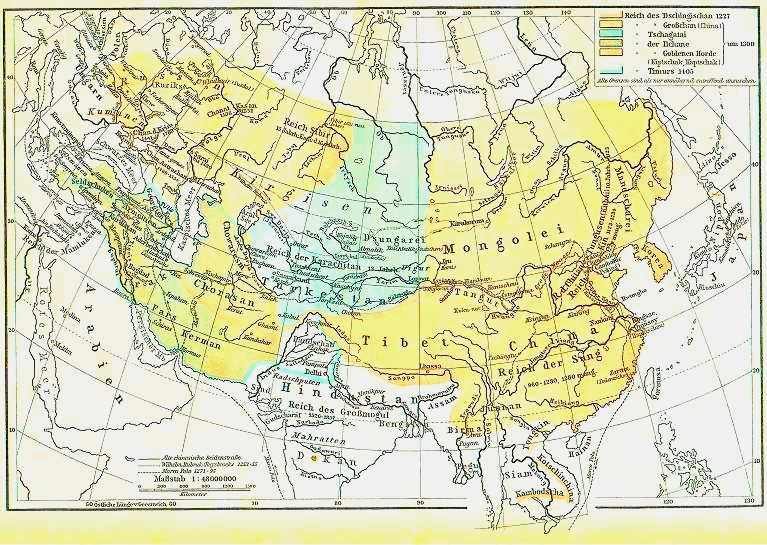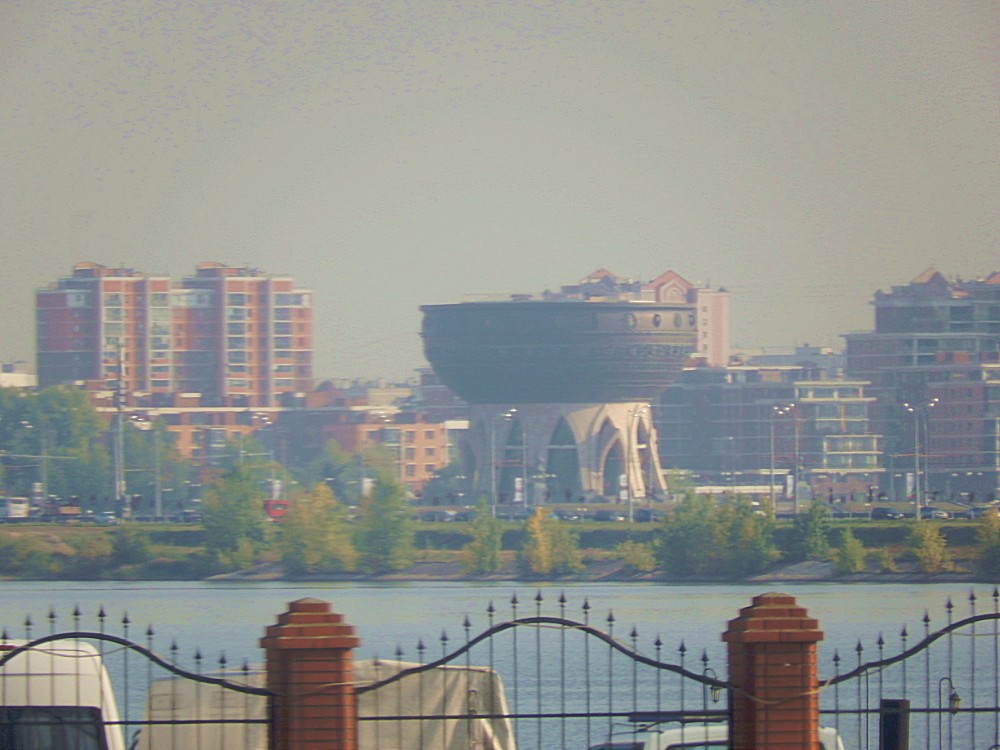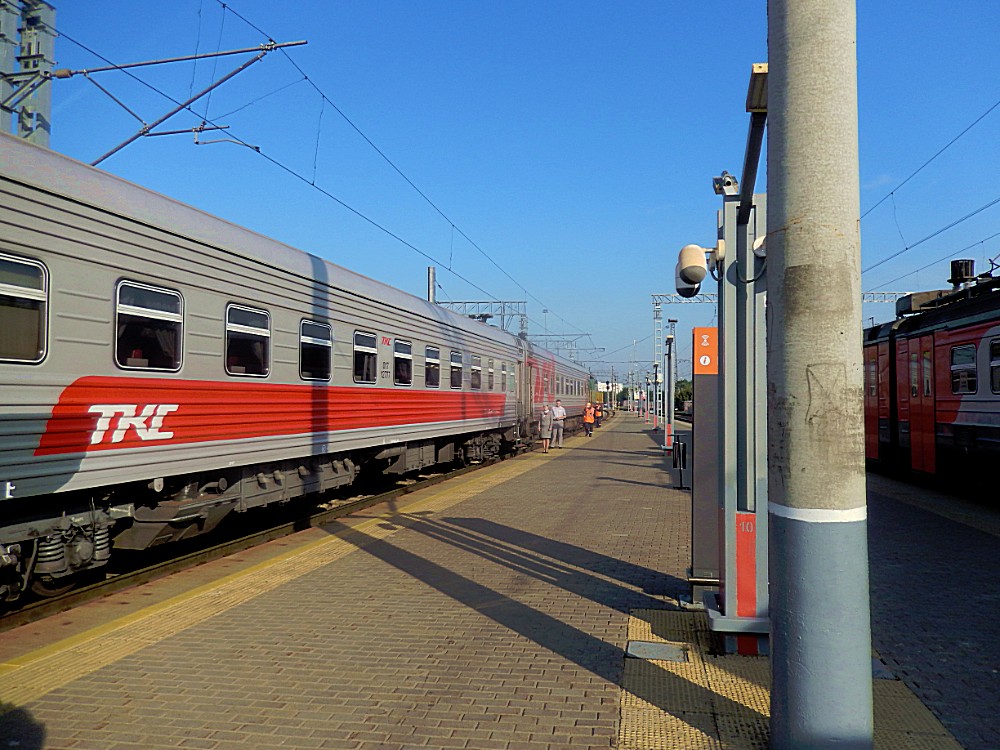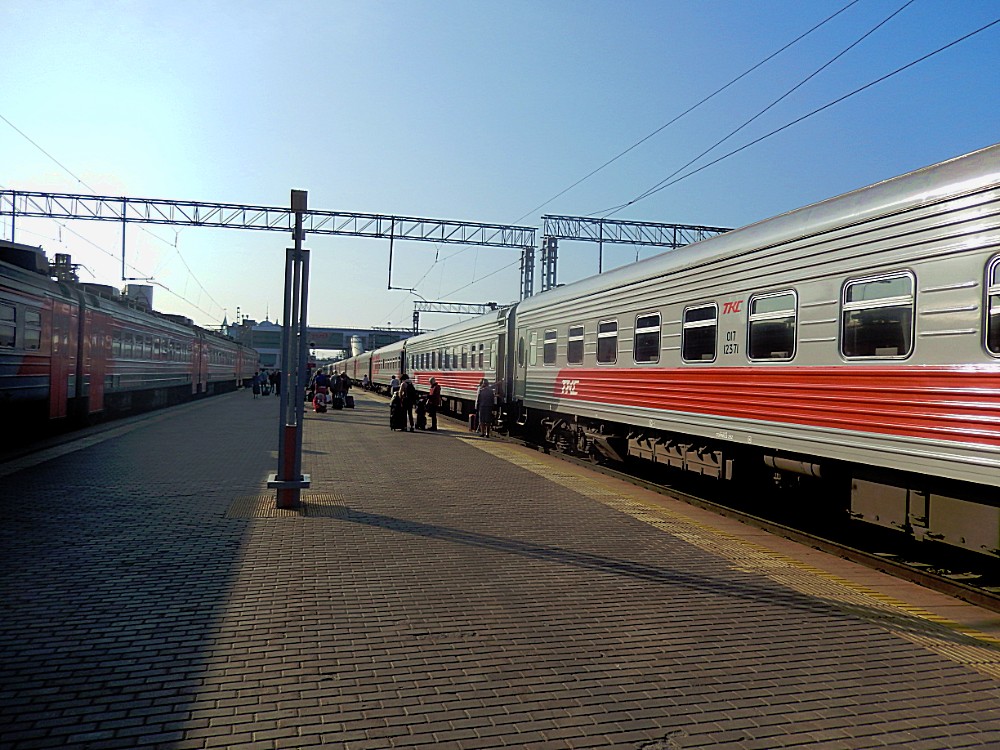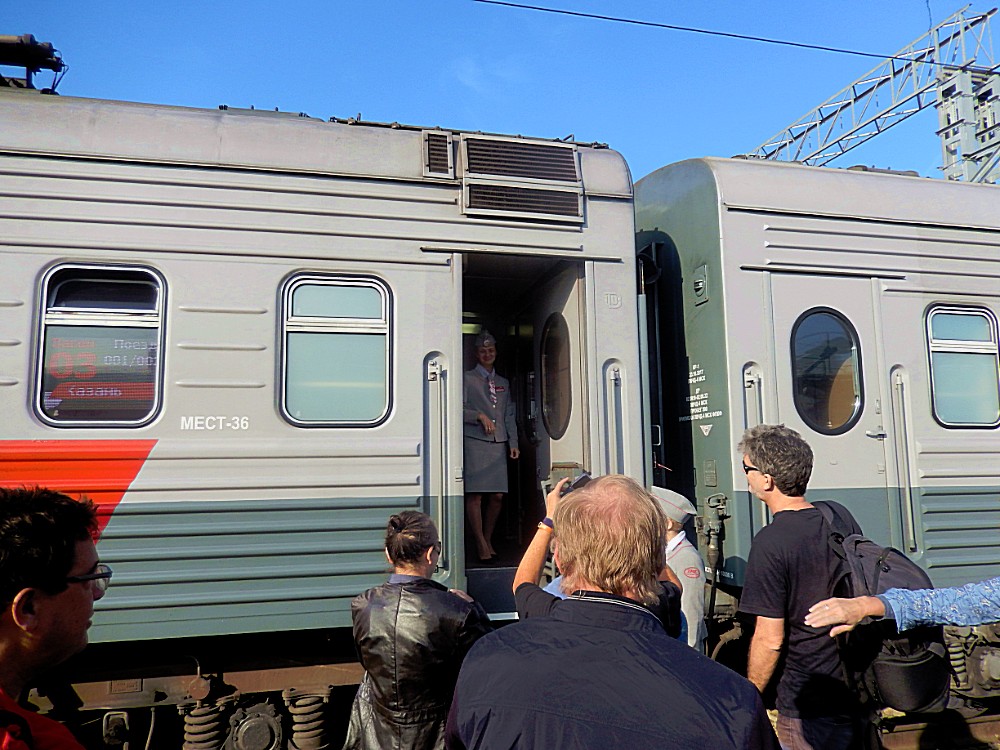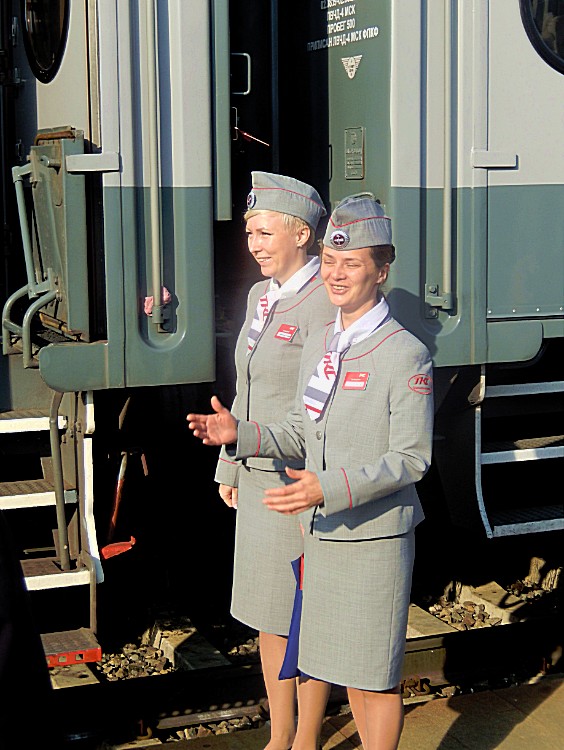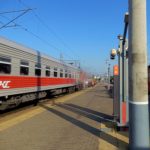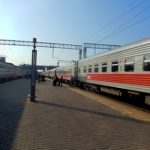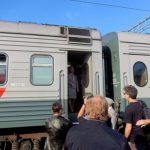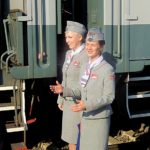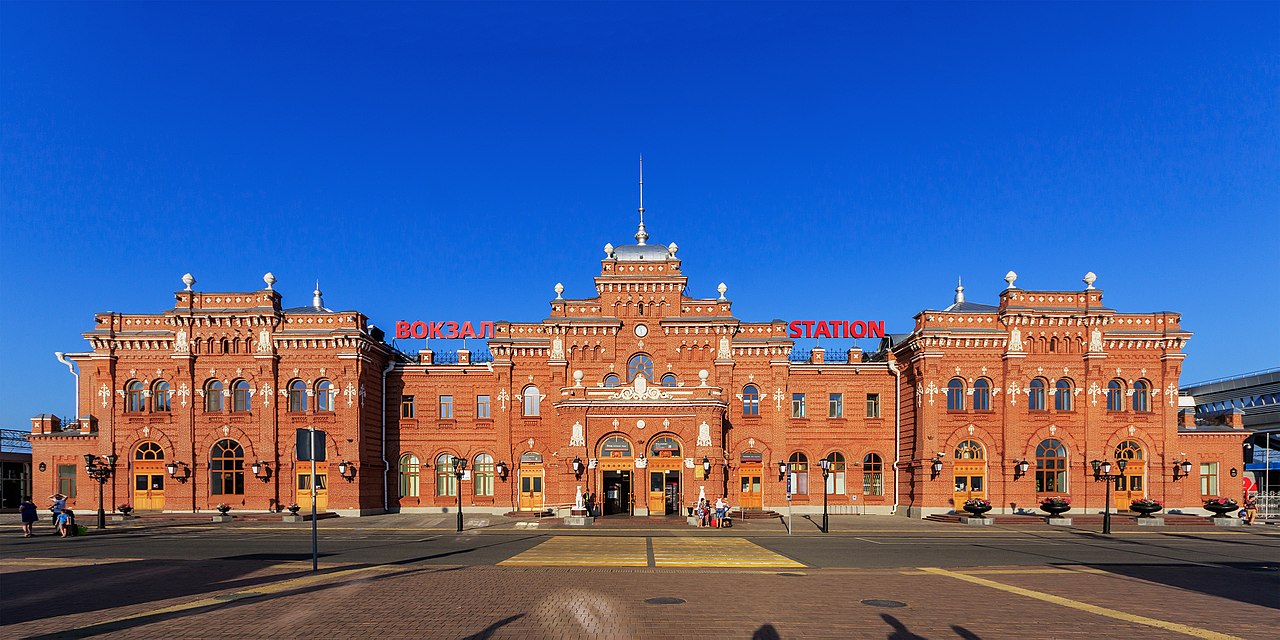The railroad to Tatarstan: Moscow –> Kazan (Ural line)
After visiting his hotel room at the Vega and packing his backpack, The Wandelgek went to Moscow Kazansky railway station…
Moscow Kazansky Railway Station
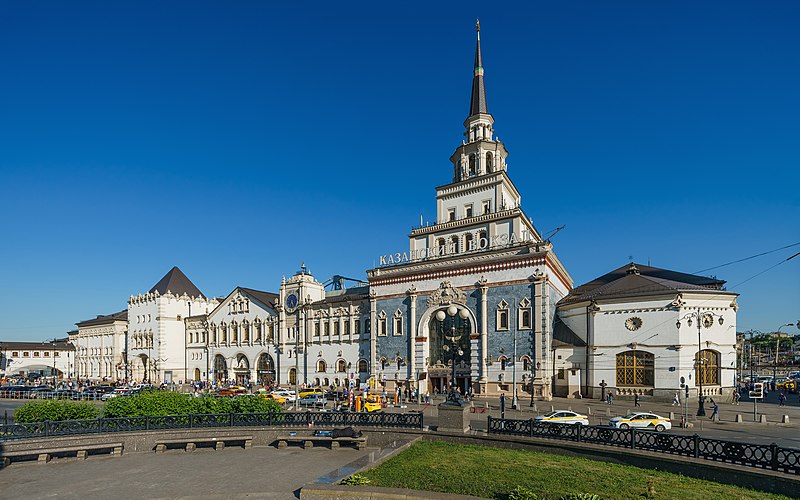
© A.Savin, WikiCommons
It was after dark when he arrived at the railway station. Kazansky railway terminal (Russian: Каза́нский вокза́л, Kazansky vokzal) also known as Moscow Kazansky railway station is one of nine railway terminals in Moscow, situated on the Komsomolskaya Square, across the square from the Leningradsky and Yaroslavsky stations.
The train would leave at about 20.50 hrs from Moscow and drive for 820 kilometers through Russia by night and was supposed to arrive in Kazan at 8.00 the next morning.
Itinerary: Moscow to Kazan
0km/0ml Moscow
207km/129ml Vekovka
818km/508ml Volga river
820km/510ml Kazan
Although The Wandelgek didn’t know it then, this first train on his journey East would be the most luxurious one. The more East The Wandelgek got, the more shabby the carriages got. Not that he cared much about that though. Luxury is not his cup of tea. He is more of the don’t-spend-money-on-superfluous-luxery-when-you-can-better-spend-it-on-getting-to-locations-of-great-natural-or-cultural-beauty-type. This was also not the 1st long train journey he did. In 2004 he travelled 40 hrs in old soviet train carriages from Almaty (Alma Ata) in Kazakhstan over the Kazakh Steppes towards Urumqi in China (Xinjiang). It was very hot and the airco was broken.
Read more about that journey through the old Soviet Union stan states via this link: The Kazakh Steppes: 40 hrs by train from Almaty to Dostyq and Urumqi
There’s not that much to see while travelling by night train so after installing himself in a 4 person cabin and meeting his fellow travellers, The Wandelgek decided to spend some time in the restaurant carriage and see whether they had some decent beers. They did! ?
Vekovka Railway Station
Somewhere during the early night, The Wandelgek was still in the restauration carriage, the train stopped for a few minutes at Vekovka station…
One thing you should absolutely do when on a train journey this long is getting to know the itinary time tables that tell you when to expect a stop long enough to be allowed to leave the train. Some stops are very brief (2 to 5 minutes) and the provodnitsa (the lady that attends to your carriage) won’t allow you to leave the train. Often these brief stops are only to let people leave and enter the train or to put the garbage on the platform. But occassionally there are longer stops of about 10 minutes and you can get of. Vekovka was such a longer stop.
Before starting this journey The Wandelgek prepared well by reading loads of blogposts and travelbooks about the Transsib. One thing they all had in common was the story about life on the platforms. They all spoke of local merchants, coming to the station well before the train arrives and putting blankets on the platform or small crates or boxes full of goods like fruit, dried fish, booze, dried meat, drinks, noofles and candy. Something he had seen before while tavelling through Kazakhstan. It was long past midnight and there were 1 or 2 people on the platform selling stuff. A lady had these blinking fake jewelry like things to sell and there was a man trying to sell The Wandelgek a quite large vase. Yesssss THAT is exactly what The Wandelgek needed to buy. I had carefully packed my fjallraven kajka backpack at home trying to do this as economically as possible, even repacking it (read that story via this link: Nathalie and diner at Cafe Pushkin) but still I forgot to pack a flower vase. NOT! It still confuses and puzzles The Wandelgek when he thinks about what could possibly have motivated the man to try and sell a vase at a train platform at 2.00 AM ???????
However: Vekovka had been the only station on the long almost 8000 kilometer trail towards Beijing, where The Wandelgek saw merchants on the platform. A relatively new law had been issued to keep merchants away from the platforms and only small shops were allowed, where travellers could buy the neccesary stuff needed on the road. And it was quite neccesary to buy stuff on the platforms or before the journey at a supermarket, because the food sold on the train was not that good*
*That’s a gross understatement.
After stretching his legs and enjoying the cool night air The Wandelgek returned to the restauration car to finish his beer and return to the cabin.
A bit of early history of Russia and Tatarstan
While The Wandelgek was finally sleeping, it is time for a bit of historic background on Russia and the areas The Wandelgek will be travelling through in upcoming blogposts ?
The Huns and Attila
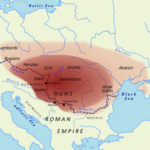 The Huns were a nomadic people who lived in Central Asia, the Caucasus, and Eastern Europe, between the 4th and 6th century AD. According to European tradition, they were first reported living east of the Volga River, in an area that was part of Scythia at the time; the Huns’ arrival is associated with the migration westward of an Iranian people, the Alans. By 370 AD, the Huns had arrived on the Volga, and by 430 the Huns had established a vast, if short-lived, dominion in Europe, conquering the Goths and many other Germanic peoples living outside of Roman borders, and causing many others to flee into Roman territory. The Huns, especially under their King Attila, made frequent and devastating raids into the Eastern Roman Empire. In 451, the Huns invaded the Western Roman province of Gaul, where they fought a combined army of Romans and Visigoths at the Battle of the Catalaunian Fields, and in 452 they invaded Italy. After Attila’s death in 453, the Huns ceased to be a major threat to Rome and lost much of their empire following the Battle of Nedao (454?).
The Huns were a nomadic people who lived in Central Asia, the Caucasus, and Eastern Europe, between the 4th and 6th century AD. According to European tradition, they were first reported living east of the Volga River, in an area that was part of Scythia at the time; the Huns’ arrival is associated with the migration westward of an Iranian people, the Alans. By 370 AD, the Huns had arrived on the Volga, and by 430 the Huns had established a vast, if short-lived, dominion in Europe, conquering the Goths and many other Germanic peoples living outside of Roman borders, and causing many others to flee into Roman territory. The Huns, especially under their King Attila, made frequent and devastating raids into the Eastern Roman Empire. In 451, the Huns invaded the Western Roman province of Gaul, where they fought a combined army of Romans and Visigoths at the Battle of the Catalaunian Fields, and in 452 they invaded Italy. After Attila’s death in 453, the Huns ceased to be a major threat to Rome and lost much of their empire following the Battle of Nedao (454?).
Their main military technique was mounted archery.
The Huns may have stimulated the Great Migration, a contributing factor in the collapse of the Western Roman Empire.
The huns were eventually defeated and disappeared into obscurity after defeats against the combined forces of several far east nomadic tribes. In the power vacuüm new peoples lived on the wide grass plains of Russias far east and current Mongolia.
Cultural and ethnic Melting Pot
What was left in the current area where Russia or better 3 Russias were to be founded, was a melting pot of peoples that had been ru ning from the Huns invasions, specially the most destructive one led by Atilla.
There were Ugric peoples from the Urals and Slavs from the northern European part of Russia. But there was no real order. There was no law and much violence and the Slavs repeatedly asked the Danish Viking king to come and rule them.
Eventually he did and he conquered Novgorod. After his death more Viking rulers followefd and they were called Varangians. They conquered Smolensk and Kiev. Because of the trade routes from the Black Sea along the river Dnjepr into the “Russian” territories, Kiev became the mother of all Russian cities.
One of the tribes moving west after the Hun invasions were the Uralic tribes from the Urals and they moved to the European part of current Russia and partly split up becoming the Finno Ugric people living in current Hungary and Finland. This Uralic or Ugric tribe however also found an area to settle around current Kiev and Moscow and the area of the Volga river. In the early middle ages the Swedish Vikings conquered and plundered the world travelling through north west Europe, as far as iceland, Greenland and north america (current Canada) and to the east via rivers like the Neva and Dnjepr towards the areas of Novgorod, Kiev and Moscow. There were quarrels and plunderings but after a while some of the Vikings settled in the area peacefully and mingled with the Ugric/Slav people. It is believed that this sparked the genesis of the people named Russians. A mingling of Ugric/Slav people and Swedish Vikings.
Subsequently 3 Russias were founded:
- Great Russia (born of Muscovi, the settlement that became Moscow);
- Ukraine, also named Black land (soil related) and Little Russia &
- White Russia (Belarus).
The focus in Russia however was on Kiev because of the lively trade on the Dnjepr and the fertility of the Ukrainian land. However, there was change in the air.
Far away in the utmost east of current Russia and Mongolia, in the thirteenth century, the word Mongol grew into an umbrella term for a large group of Mongolic-speaking tribes united under the rule of Genghis Khan.
Genghis Khan
Long the Mongol tribes quarelled among eachother until a young man named Temujin rose to power, succeeding in the unification of the Mongol tribes and thus creating a formidable military force (more of that later).
Temujin became known as Genghis Khan. His armies moved south into China and west as far as Poland and Austria. The faction moving west became known as the Golden Horde and it completely surprised the Russian peoples. They were quickly overrun and the Golden Horde ruled for a short span of time over Russia.
With the breakup of the empire, the dispersed Mongolic peoples quickly adopted the mostly Turkic cultures surrounding them and were assimilated, forming parts of Azerbaijanis, Uzbeks, Karakalpaks, Tatars, Bashkirs, Turkmens, Uyghurs, Nogays, Kyrgyzs, Kazakhs, Caucasaus peoples, Iranian peoples and Moghuls.
When the military power of the Mongols finally waned, the remnants of the golden horde were wiped away by turkic peoples coming from the south (think about the powerfull but short lived empire of Tamurlane (Timur) which had its powerbase in cities like Samarkand and Buchara in current Uzbekistan.
Read more about my journeys on the silkroad through Uzbekistan via this link: Samarkand and the heritage of Timur
Another turkic and islamic tribe, the Tatars from the south settled east of current Moscow (but Moscow was not founded yet) and founded the state of Tatarstan. Their main city was Kazan, the very place where the train was leading The Wandelgek to.
The settling of the Tatars and the founding of Kazan started a long period of wars between the Russian people and the Tatars, with successes and losses on both sides, but eventually the Russians conquered Tatarstan and the city of Kazan. More of that in my next blogpost though.
Morning had broken and as The Wandelgek woke up hearing and feeling the constant kedang-kedang-sound of the wheels on the tracks below him, he opened his eyes and looked outside. The train was now very near to the Volga river and the Tatar capital of Kazan.
Mother Volga
The train arrived at tge Volga river at the city of Kazan. The Volga or Mother Volga as the Russians tenderly call it, in tales can be compared to the Milky Way when described as the milk spoiled from the breast of the Goddess Ea. The volga is also seen as thespoils from a womans breast, nurturung the Russian nation for many, many centuries, stirring strong feelings in Russian hearts. It also witnessed numerous battles and wars like in the 2nd world war and in the battles between Musccovian princes and the Tatar khans armies.
It begins just north of Moscow and flows 3,530 kilometers (2,195 miles) south to the Caspian Sea.
Here is an images of the Tatar capital of Kazan at the Volga river.
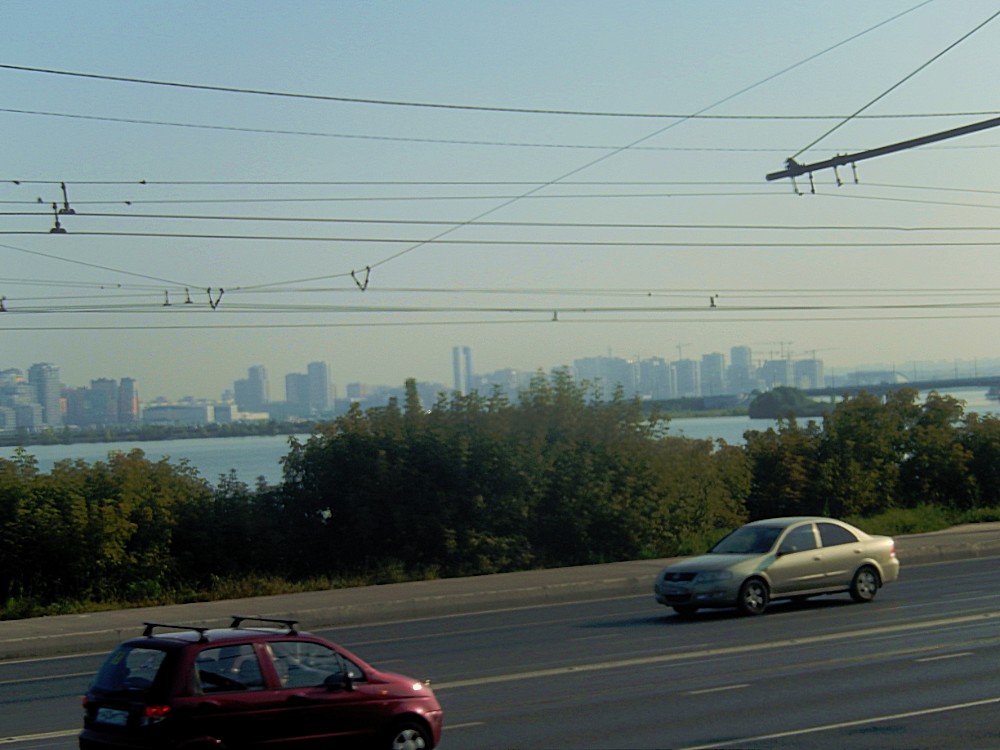 Kazanka River
Kazanka River
Affter crossing the river Volga the railroad followed the embankment of the Kazanka River into Kazan’s city center.
The destinctive cup-like Kazan Family Center could be seen very clearly when the train entered Kazan. It is a relatively new buiding (2013) used as a wedding palace…
Kazan Railway Station
The train now entered the railway station of Kazan. Here The Wandelgek left the train to go and discover more about this historically very interesting city and he said goodbye to the friendly provodnitsas .
Provodnitsas
The main tasks of provodnitsas or carriage attendants are keeping track of your ticket and destination (tickets are collected at the start of yoir journey and returned about an hour before leaving the train. The provodnitsa reminds you when to get ready for that and start packing. Beside that the provodnitsa also cleans the toilets, bathrooms and corridor floors, collects the sheets and blankets, keeps the water hot in the Samovar (=boiler) this is done with coal, places garbage bags on the platform to be collected and warns passengers to get back on the train when it is due to leave.
The facade of the station was magnificent…
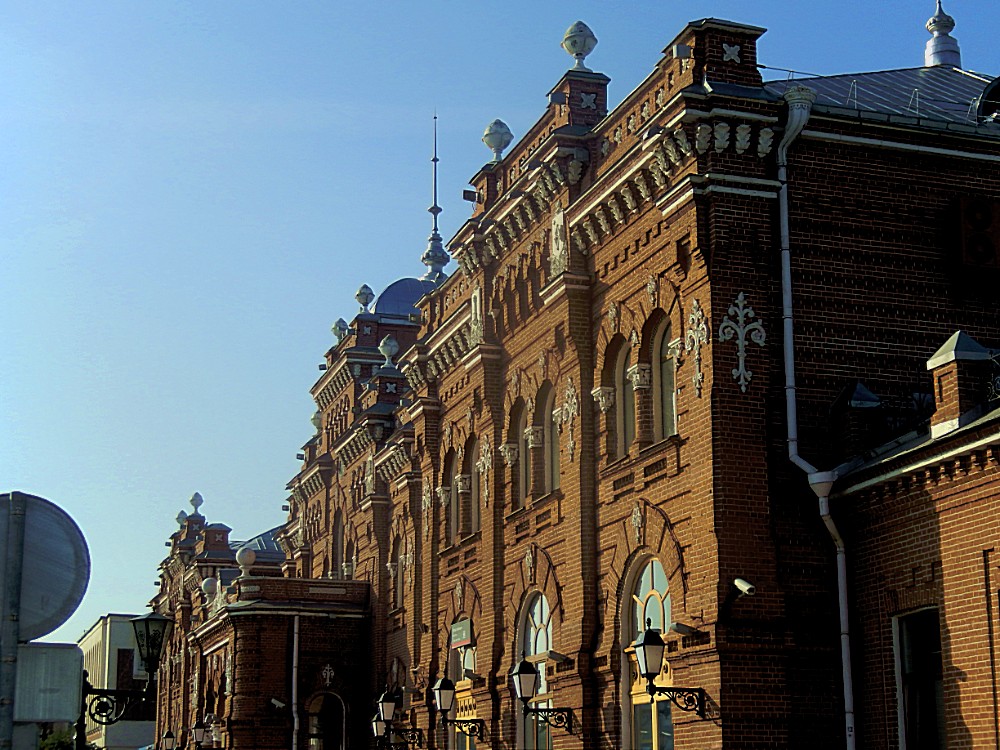 This concluded the 1st trajectory on the Transsib/ Ural line section. It was about 8.00 AM in the morning and from here The Wandelgek went as quick as possible to his hotel and hotelroom in central Kazan from where he could start discovering the cities secrets. He arrived at his room, which was to his disposal all day, but where he would not sleep, because tonight at about 21.00 PM he would board the Transsib/Ural line again for a 2nd section of the Transsib journey.
This concluded the 1st trajectory on the Transsib/ Ural line section. It was about 8.00 AM in the morning and from here The Wandelgek went as quick as possible to his hotel and hotelroom in central Kazan from where he could start discovering the cities secrets. He arrived at his room, which was to his disposal all day, but where he would not sleep, because tonight at about 21.00 PM he would board the Transsib/Ural line again for a 2nd section of the Transsib journey.
Read more about his discoveries of the history of Russia and Tatarstan in my next upcoming blog?

